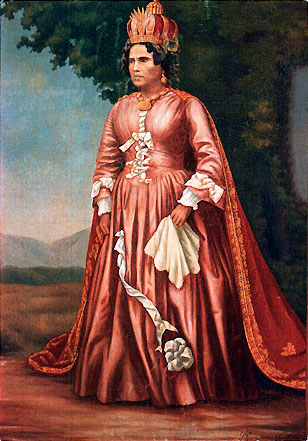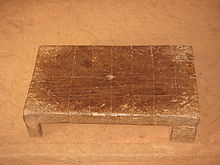
Antananarivo, also known by its colonial shorthand form Tana, is the capital and largest city of Madagascar. The administrative area of the city, known as Antananarivo-Renivohitra, is the capital of Analamanga region. The city sits at 1,280 m (4,199 ft) above sea level in the center of the island, the highest national capital by elevation among the island countries. It has been the country's largest population center since at least the 18th century. The presidency, National Assembly, Senate, and Supreme Court are located there, as are 21 diplomatic missions and the headquarters of many national and international businesses and NGOs. It has more universities, nightclubs, art venues, and medical services than any city on the island. Several national and local sports teams, including the championship-winning national rugby team, the Makis, are based here.

Radama I "the Great" was the first Malagasy sovereign to be recognized as King of Madagascar (1810–1828) by a European state, Great Britain. He came to power at the age of 17 following the death of his father, King Andrianampoinimerina.

Ranavalona I, also known as Ranavalo-Manjaka I and the "Mad Monarch of Madagascar" was sovereign of the Kingdom of Madagascar from 1828 to 1861. After positioning herself as queen following the death of her young husband, Radama I, Ranavalona pursued a policy of isolationism and self-sufficiency, reducing economic and political ties with European powers, repelling a French attack on the coastal town of Foulpointe, and taking vigorous measures to eradicate the small but growing Malagasy Christian movement initiated under Radama I by members of the London Missionary Society.

Radama II was the son and heir of Queen Ranavalona I and ruled from 1861 to 1863 over the Kingdom of Madagascar, which controlled virtually the entire island. Radama's rule, although brief, was a pivotal period in the history of the Kingdom of Madagascar. Under the unyielding and often harsh 33-year rule of his mother, Queen Ranavalona I, Madagascar had successfully preserved its cultural and political independence from European colonial designs. Rejecting the queen's policy of isolationism and persecution of Christians, Radama II permitted religious freedom and re-opened Madagascar to European influence. Under the terms of the Lambert Charter, which Radama secretly contracted in 1855 with French entrepreneur Joseph-François Lambert while Ranavalona still ruled, the French were awarded exclusive rights to the exploitation of large tracts of valuable land and other lucrative resources and projects. This agreement, which was later revoked by Prime Minister Rainilaiarivony, was key to establishing France's claim over Madagascar as a protectorate and, in 1896, as a colony.

Andrianampoinimerina (1745–1810) ruled the Kingdom of Imerina on Madagascar from 1787 until his death. His reign was marked by the reunification of Imerina following 77 years of civil war, and the subsequent expansion of his kingdom into neighboring territories, thereby initiating the unification of Madagascar under Merina rule. Andrianampoinimerina is a cultural hero and holds near mythic status among the Merina people, and is considered one of the greatest military and political leaders in the history of Madagascar.

Ambohimanga is a hill and traditional fortified royal settlement (rova) in Madagascar, located approximately 24 kilometers (15 mi) northeast of the capital city of Antananarivo. It is situated in the commune of Ambohimanga Rova.
Articles related to Madagascar include:
Andriambelomasina was a Merina King of Imerina Avaradrano, the northern part of the central highlands of Madagascar. The kingdom's capital was located at Ambohimanga.

Andriamasinavalona (1675–1710), also known as Andrianjakanavalondambo, was a King of Imerina in the central highlands of Madagascar. He made significant and enduring contributions to the social, political and economic life of Imerina. Chief among these was the expansion of his territories and the pacification and unification of certain principalities that had become locked in violent conflict; Andriamasinavalona established and ruled over the largest extent of the Kingdom of Imerina. He gave the name of Antananarivo to the capital city that was rapidly expanding around the royal palace on the hill of Analamanga, created a large public square at Andohalo outside the gates of the city, and named a series of other locations within the city. He also took possession of a distant hill he renamed Ambohimanga as a lodging for his son Andriantsimitoviaminiandriana; the royal city that developed there has been declared a UNESCO World Heritage Site.

The Rova of Antananarivo is a royal palace complex (rova) in Madagascar that served as the home of the sovereigns of the Kingdom of Imerina in the 17th and 18th centuries, as well as of the rulers of the Kingdom of Madagascar in the 19th century. Its counterpart is the nearby fortified village of Ambohimanga, which served as the spiritual seat of the kingdom in contrast to the political significance of the Rova in the capital. Located in the central highland city of Antananarivo, the Rova occupies the highest point on Analamanga, formerly the highest of Antananarivo's many hills. Merina king Andrianjaka, who ruled Imerina from around 1610 until 1630, is believed to have captured Analamanga from a Vazimba king around 1610 or 1625 and erected the site's first fortified royal structure. Successive Merina kings continued to rule from the site until the fall of the monarchy in 1896, frequently restoring, modifying or adding royal structures within the compound to suit their needs.
Andrianjaka Razakatsitakatrandriana or Andrianjakatsitakatrandriana was the King of Imerina in the central Highlands of Madagascar from 1670–1675. He was born in Analamanga as Lamboritakatra, eldest son of King Andriantsimitoviaminandriandehibe. During his father's lifetime, Andrianjakatsitakatrandriana was granted Antananarivo and the land west of it, including Ambohidrabiby, Ambohimanga and regions in the north, as his fief. Although his younger brother, Andrianjakanavalondambo, demonstrated a stronger capacity for wise leadership, Andrianjakatsitakatrandriana was selected to succeed upon the death of their father in 1670. Andriantsimitoviaminandriandehibe took this decision on the basis of the tradition established by their Vazimba ancestors Rafohy and Rangita, who declared that the elder must rule before the younger. In 1675 Andriamampandry and the nobles of Imerina deposed him in favor of his younger brother.

Andriana was both the noble class and a title of nobility in Madagascar. Historically, many Malagasy ethnic groups lived in highly stratified caste-based social orders in which the Andriana were the highest strata. They were above the Hova and Andevo (slaves). The Andriana and the Hova were a part of Fotsy, while the Andevo were Mainty in local terminology.

The KingdomofMerina, or Kingdom of Madagascar, officially the Kingdom of Imerina, was a pre-colonial state off the coast of Southeast Africa that, by the 18th century, dominated most of what is now Madagascar. It spread outward from Imerina, the Central Highlands region primarily inhabited by the Merina ethnic group with a spiritual capital at Ambohimanga and a political capital 24 km (15 mi) west at Antananarivo, currently the seat of government for the modern state of Madagascar. The Merina kings and queens who ruled over greater Madagascar in the 19th century were the descendants of a long line of hereditary Merina royalty originating with Andriamanelo, who is traditionally credited with founding Imerina in 1540.
Andriantsitakatrandriana was the King of Imerina from around 1630 to 1650, acceding to the throne upon the death of his father, Andrianjaka. He took two wives: the first, Ravololontsimitovy, gave birth to his first son and successor Andriantsimitoviaminandriandehibe, while his second wife, Rafoloarivo, gave birth to a son named Andriamanjakatokana. During his reign, he chased his second wife and son from his territory, and constructed dikes to transform the Betsimitatatra swamps around Antananarivo into vast rice paddies to feed the local population.
Andriamanelo was king of Alasora in the central highlands region of Madagascar. He is generally considered by historians to be the founder of the Kingdom of Imerina and originator of the Merina royal line that, by the 19th century, had extended its rule over virtually all of Madagascar. The son of a Vazimba mother and a man of the newly arrived Hova people originating in southeast Madagascar, Andriamanelo ultimately led a series of military campaigns against the Vazimba, beginning a several-decade process to drive them from the Highlands. The conflict that defined his reign also produced many lasting innovations, including the development of fortified villages in the highlands and the use of iron weapons. Oral tradition furthermore credits Andriamanelo with establishing a ruling class of nobles (andriana) and defining the rules of succession. Numerous cultural traditions, including the ritual of circumcision, the wedding custom of vodiondry and the art of Malagasy astrology (sikidy) are likewise associated with this king.
Ralambo was the ruler of the Kingdom of Imerina in the central Highlands region of Madagascar from 1575 to 1612. Ruling from Ambohidrabiby, Ralambo expanded the realm of his father, Andriamanelo, and was the first to assign the name of Imerina to the region. Oral history has preserved numerous legends about this king, including several dramatic military victories, contributing to his heroic and near-mythical status among the kings of ancient Imerina. The circumstances surrounding his birth, which occurred on the highly auspicious date of the first of the year, are said to be supernatural in nature and further add to the mystique of this sovereign.

The architecture of Madagascar is unique in Africa, bearing strong resemblance to the construction norms and methods of Southern Borneo from which the earliest inhabitants of Madagascar are believed to have immigrated. Throughout Madagascar, the Kalimantan region of Borneo and Oceania, most traditional houses follow a rectangular rather than round form, and feature a steeply sloped, peaked roof supported by a central pillar.

The twelve sacred hills of Imerina are hills of historical significance to the Merina people of Madagascar. Located throughout Imerina, the central area of the highlands of Madagascar, the sites were often ancient capitals, the birthplaces of key public figures, or the tomb sites of esteemed political or spiritual leaders. The first set of sacred sites was designated by early 17th-century king Andrianjaka. The notion was re-sanctified under late 18th-century king Andrianampoinimerina, who replaced several of the earlier sites with new ones. More than 12 sites were thus designated as sacred over time, although the notion of twelve sacred hills was perpetuated because of the significance of the number 12 in Malagasy cosmology. Today, little concrete evidence of the former importance of many of these sites remains, but the significant archeological and cultural heritage of several of the sites has been preserved. The historic significance of the sites is best represented by the Rova of Antananarivo at Analamanga, the ancient fortified city at Alasora, the houses and tombs of the andriana at Antsahadinta and the ancient fortifications and palaces at Ambohimanga, protected as a UNESCO World Heritage Site since 2001.

A sampy is an amulet or idol of spiritual and political importance among numerous ethnic groups in Madagascar. Amulets and idols fashioned from assorted natural materials have occupied an important place among many Malagasy communities for centuries. Sampy can be classified into two categories. Those that are meant to bless and protect an entire community by serving as a deity figure, and individual amulets that people wear on their person as protection. The latter are called Ody. The Sampy are sometimes considered autonomous beings; having their own name, their own characteristics, their own purposes, their own conditions and even their own home. Among the most famous are Ikelimaza, Rafantaka and Ramahavaly.
A rova is a fortified royal complex built in the central highlands of Madagascar by Merina of the Andriana (noble) class. The first rova was established at Alasora by king Andriamanelo around 1540 to protect his residence throughout a war with the neighboring Vazimba. Rovas are organized according to traditional symbolic notions of space and enclose the royal residences, the tomb of the founder, and a town square marked with a stone. They are protected with walls, trenches and stone gateways and are planted with fig trees symbolic of royalty.















